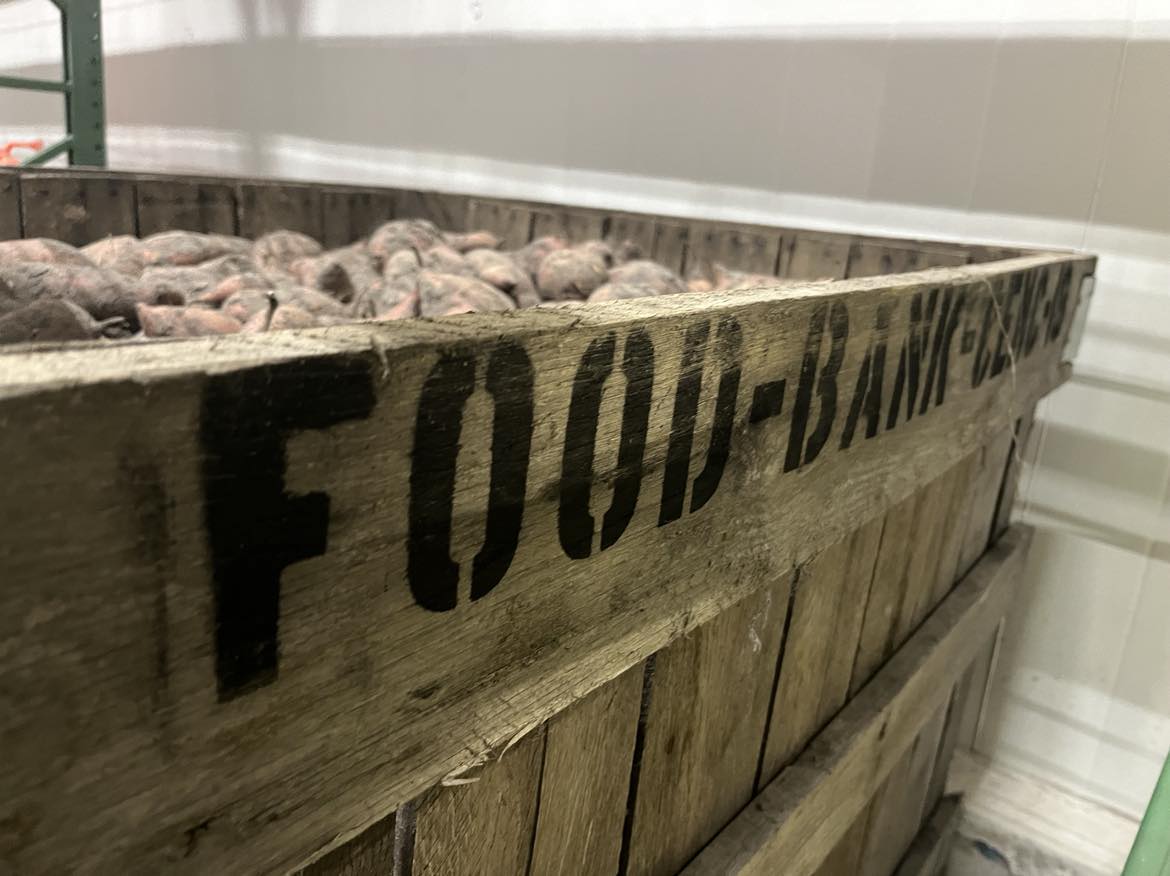Food Bank vs. Food Pantry & How You Can Support Them
go.ncsu.edu/readext?1096769
en Español / em Português
El inglés es el idioma de control de esta página. En la medida en que haya algún conflicto entre la traducción al inglés y la traducción, el inglés prevalece.
Al hacer clic en el enlace de traducción se activa un servicio de traducción gratuito para convertir la página al español. Al igual que con cualquier traducción por Internet, la conversión no es sensible al contexto y puede que no traduzca el texto en su significado original. NC State Extension no garantiza la exactitud del texto traducido. Por favor, tenga en cuenta que algunas aplicaciones y/o servicios pueden no funcionar como se espera cuando se traducen.
Português
Inglês é o idioma de controle desta página. Na medida que haja algum conflito entre o texto original em Inglês e a tradução, o Inglês prevalece.
Ao clicar no link de tradução, um serviço gratuito de tradução será ativado para converter a página para o Português. Como em qualquer tradução pela internet, a conversão não é sensivel ao contexto e pode não ocorrer a tradução para o significado orginal. O serviço de Extensão da Carolina do Norte (NC State Extension) não garante a exatidão do texto traduzido. Por favor, observe que algumas funções ou serviços podem não funcionar como esperado após a tradução.
English
English is the controlling language of this page. To the extent there is any conflict between the English text and the translation, English controls.
Clicking on the translation link activates a free translation service to convert the page to Spanish. As with any Internet translation, the conversion is not context-sensitive and may not translate the text to its original meaning. NC State Extension does not guarantee the accuracy of the translated text. Please note that some applications and/or services may not function as expected when translated.
Collapse ▲Chances are you have heard of food banks and food pantries, but do you know the difference between the two? I didn’t truly understand the difference until I started my career working with N.C. Cooperative Extension. Now I have the privilege of working alongside both food pantries and food banks and wanted to pass along some of what I’ve learned in the last few years.
Food banks are typically larger organizations that have warehouses and refrigerated trucks that give them the capacity to source large quantities of food, including fresh produce. These organizations are often associated with Feeding America, a national umbrella organization that connects food banks across the country with each other and with sources of food (including farmers, but also grocery stores, distributors, and wholesalers).
Food pantries receive distributions from food banks and provide food directly to those in need. Food pantries might operate out of faith communities, community centers, or other organizations. Food pantry capacity varies as do the number of days per week they are open and in their distribution methods. Many operate on small budgets and rely heavily on volunteer labor and donations.
To show the scope of the work of food banks, last year the Food Bank of Central & Eastern North Carolina distributed over 54 million pounds of produce across its 34 county service area last year alone. Within each county, food pantries help make this work possible. With anticipated cuts to Supplemental Nutrition Assistance Program (SNAP), the food bank doesn’t believe it will be able to match the demand for food in the upcoming months. Amy Beros, the president and CEO of the Food Bank of Central and Eastern North Carolina said they will look toward donations from the community and corporations to help fill the gap in the coming months.
The Duplin Coalition for Health is partnering with Duplin Christian Outreach Ministries to host a food collection drive to support our local food pantries. While pantries can access food through food banks, options or quantities can be limited. Some of the most specific needs include: whole grain pasta, rice, water, high protein canned items (meats), peanut butter, canned beans, dried beans, canned soup or broth, canned fruits & vegetables.
Interested in supporting this food collection drive? Purchased items can be dropped off throughout October at locations throughout the county including: any Duplin County library, Wallace or Warsaw Parks and Recreation, Piggly Wiggly in Wallace, and ECU Health Duplin Hospital.
For an exhaustive list of all drop off locations and physical addresses, a printable list of most requested items, and more information about the Food Bank of CENC, Duplin Christian Outreach Ministries, and Food Assistance in Duplin County, visit go.ncsu.edu/duplin-food-drive.
Sources:
Feeding America
Food Bank CENC




